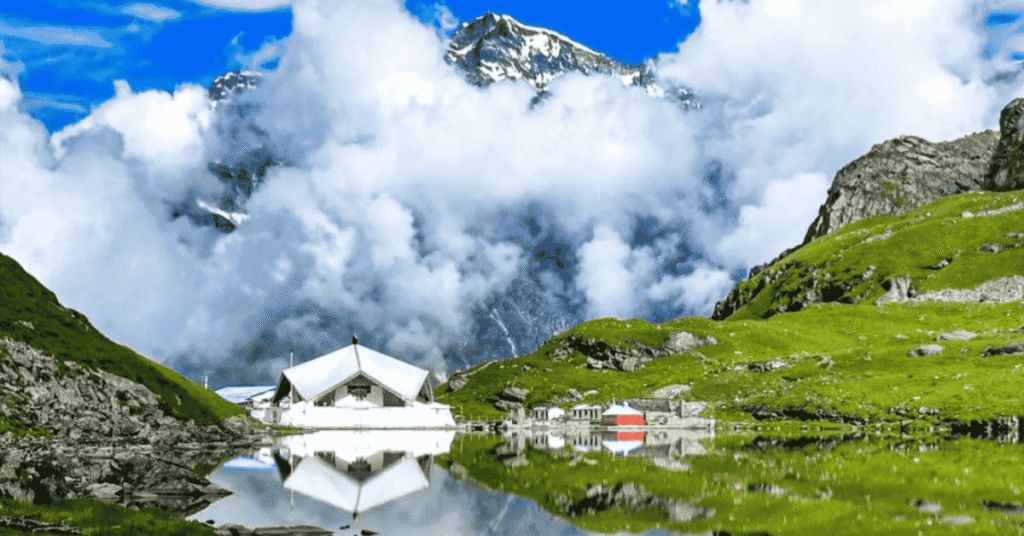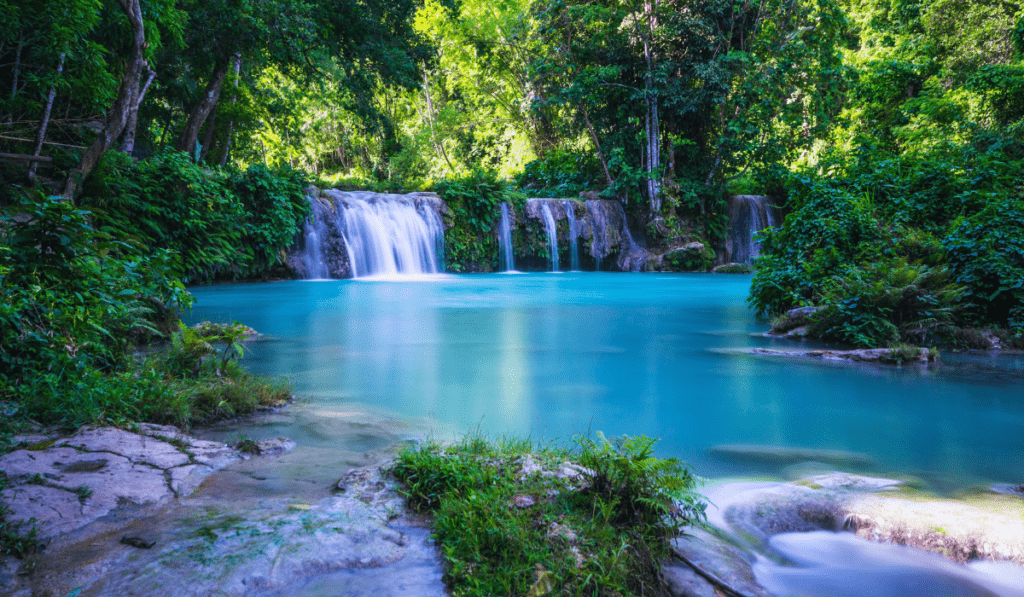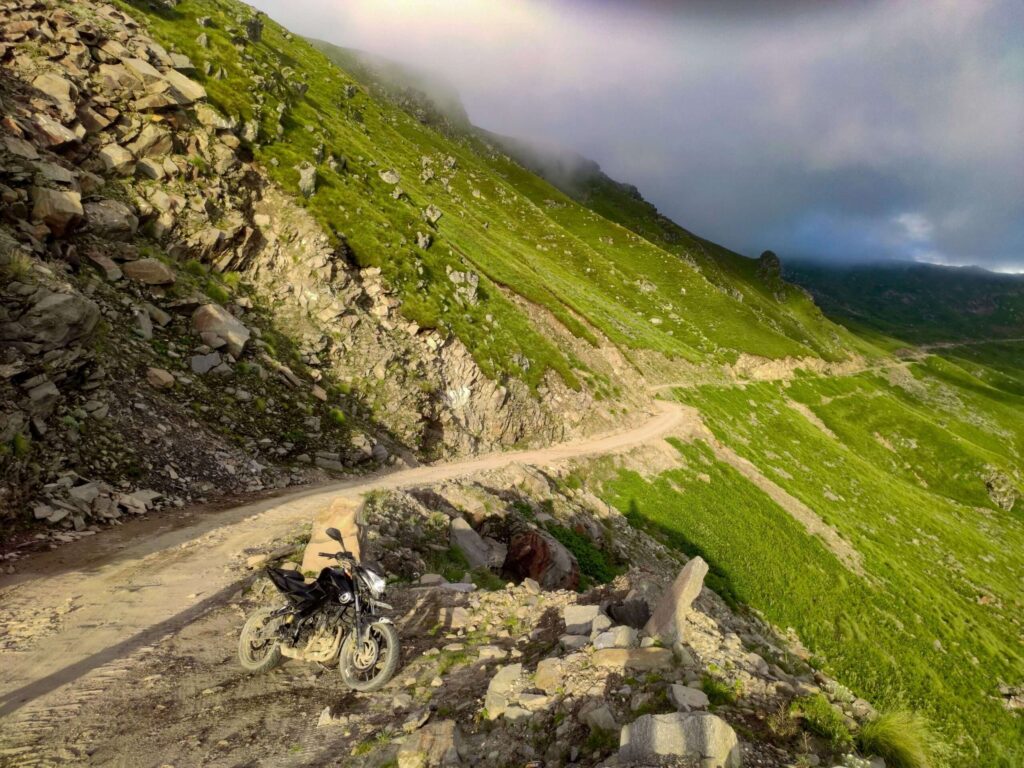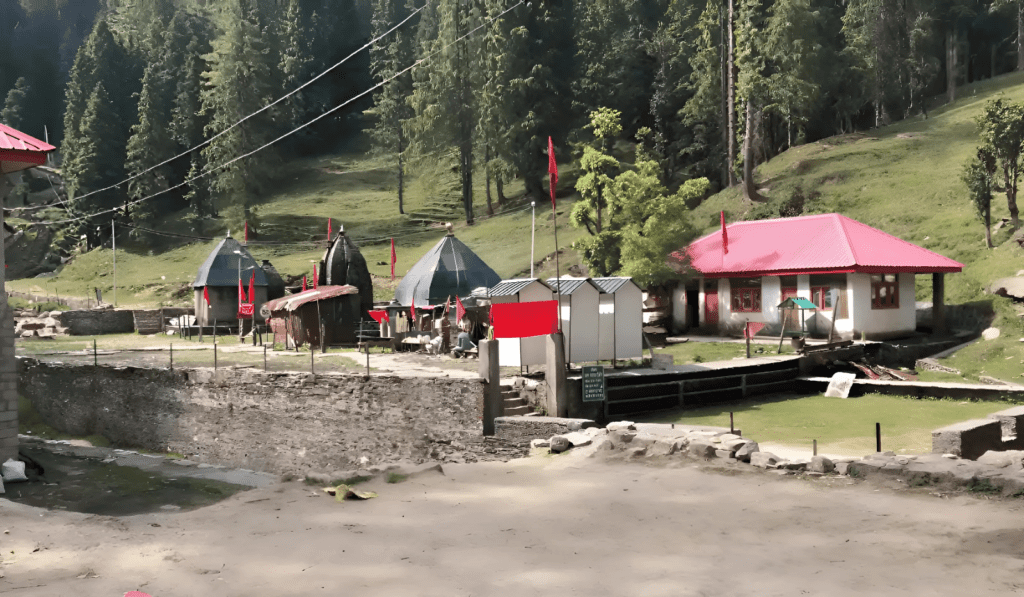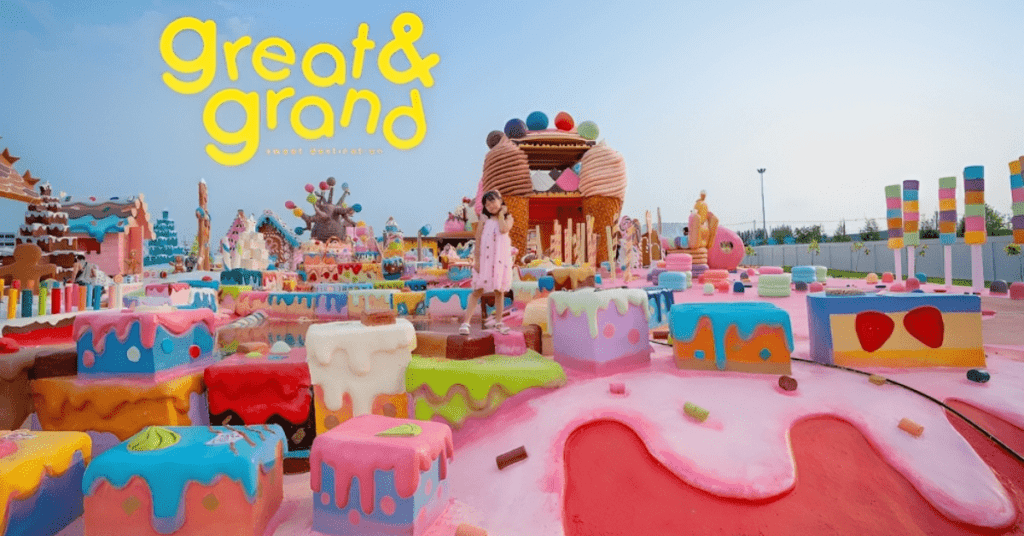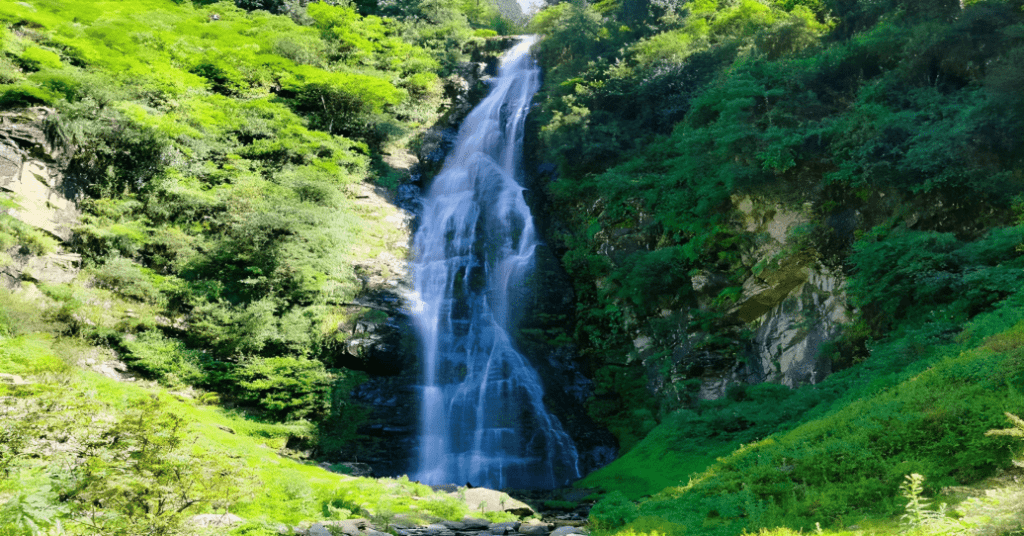Hidden among the lofty peaks of the Himalayas, Gurdwara Hemkund Sahib trek is not just a place of worship—it is an experience of divine peace, natural wonder, and spiritual endurance. Situated at an altitude of more than 15,000 feet, this sacred Sikh shrine holds the title of the world’s highest gurdwara. Pilgrims and trekkers from around the world climb up through scenic trails, alpine forests, and snow-capped rocks to reach this serene abode of faith.
This guide gives you all the information you need before starting your journey—from history and significance to weather, difficulty, cost, preparation, myths, and frequently asked questions. Whether you are a devotee or an explorer, Hemkund Sahib has something special to offer.
What is the history and story of Gurdwara Hemkund Sahib?
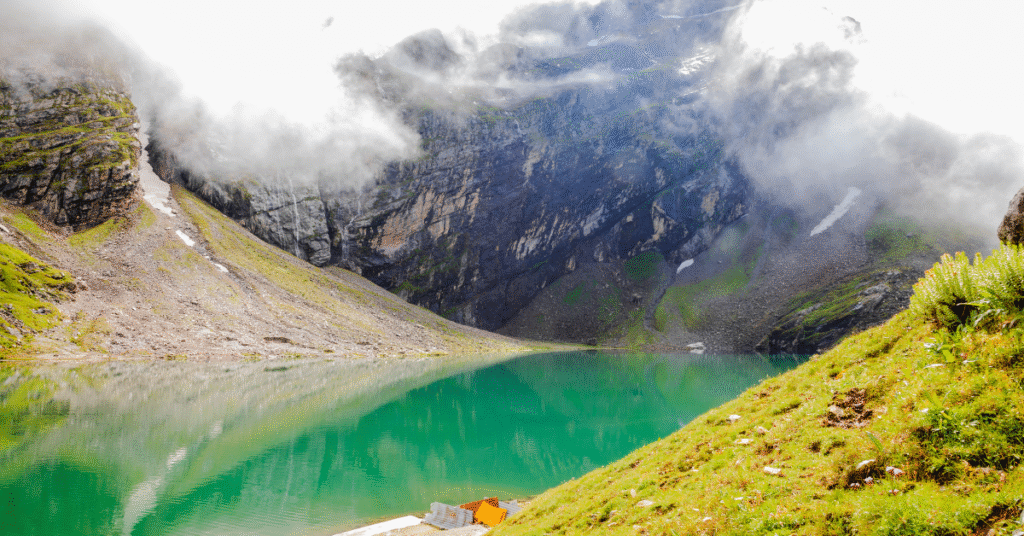
Gurdwara Hemkund Sahib is a sacred Sikh shrine located in the Himalayas in the state of Uttarakhand, India, dedicated to the tenth Sikh guru, Guru Gobind Singh Ji. He is believed to have meditated here in his previous life. The site is named after the glacial lake “Hemkund”, meaning “lake of snow”, located between seven snow-capped peaks and is steeped in spiritual significance and Sikh traditions. The exact location of the shrine was rediscovered in the 20th century by Sikh scholars and devotees, including Sant Sohan Singh, who helped establish the first gurdwara to honor Guru Gobind Singh Ji’s connection to the place. The current gurdwara, constructed since the mid-20th century, is located at an altitude of over 4,600 meters and is famous for its unique lotus-shaped architecture. Pilgrims undertake a challenging journey to reach this remote and serene site, often braving harsh terrain and weather, reflecting the spiritual journey and perseverance of Sikhism. Hemkund Sahib is not only a place of worship but also embodies Sikh values of devotion, humility and selfless service through its langar (free community kitchen) and preservation of historical artifacts associated with the guru’s legacy. It attracts thousands of devotees each year in search of spiritual enlightenment.
Religious Significance of Hemkund Sahib
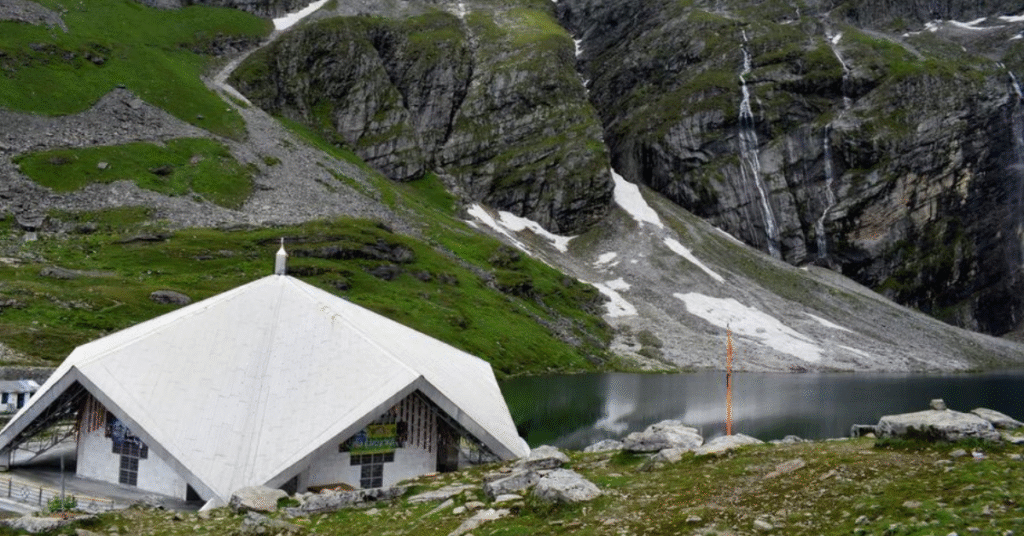
Hemkund Sahib is not just a high-altitude shrine; it’s a place where faith is tested and strengthened. For Sikhs, it represents the past life of Guru Gobind Singh Ji, where he united with the eternal and prepared for his earthly mission. Every year, thousands undertake this difficult trek, not just for darshan, but to feel connected to the legacy of sacrifice, courage, and devotion.
Bathing in the Hemkund Lake is also considered highly purifying. The icy waters are believed to cleanse the soul, despite the freezing cold.
What is the Height of Hemkund Sahib?
Gurdwara Hemkund Sahib is located in the Garhwal Himalayas in the Indian state of Uttarakhand, at an elevation of about 4,572 metres (15,000 ft) above sea level. Some sources put its elevation at about 4,632 metres (15,197 ft), making it one of the highest Sikh shrines in the world. The gurdwara is located on the banks of the glacial Hemkund Lake, surrounded by seven snow-capped peaks. The winds are strong, the snow is gusty and the climb is steep – but the views and the serenity are unmatched.
Where is Gurdwara Hemkund Sahib Located?
Hemkund Sahib is located in the Chamoli district of Uttarakhand, India, in the Garhwal Himalayas. The trek starts from a small town called Govindghat, which is near Joshimath on the way to Badrinath. From Govindghat, the trek continues through Pulna, Ghangaria, and finally to Hemkund Sahib.
How to Reach Gurdwara Hemkund Sahib Trek
To reach Gurdwara Hemkund Sahib, you first travel by road to Govindghat, which is well connected by buses and taxis to Rishikesh, Haridwar, Dehradun and other major cities of Uttarakhand; the nearest airport is Jolly Grant Airport (Dehradun), which is about 292 km away, and the nearest railway station is Rishikesh, which is about 273 km from Govindghat. From Govindghat, the journey is on foot: you trek about 13 km on a well-maintained trail to Ghangaria village, which serves as the base camp for both Hemkund Sahib and the Valley of Flowers. From Ghangaria, a steep 6 km climb leads to the temple, making the total walking distance from Govindghat to Hemkund Sahib about 19 km.
What to expect on the Gurdwara Hemkund Sahib Trek?
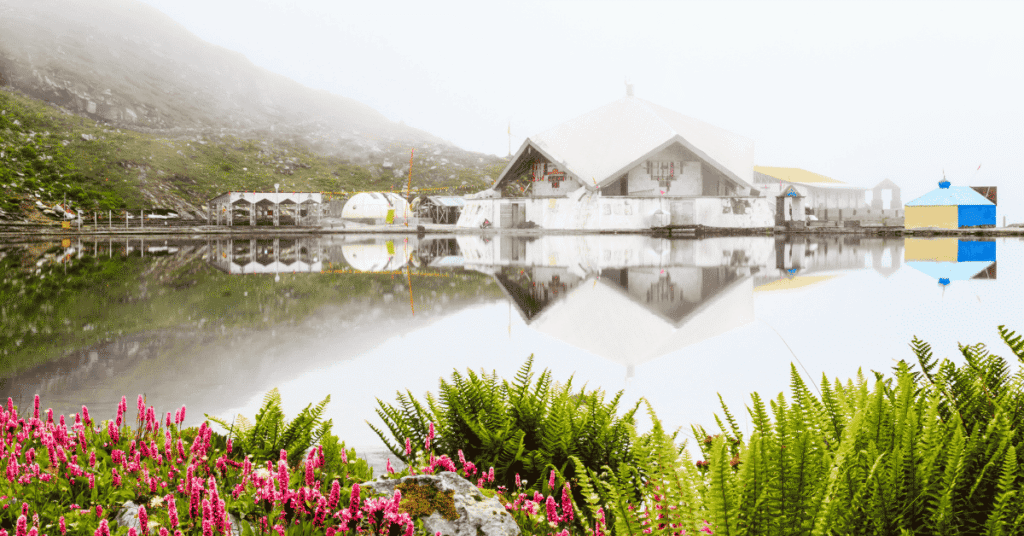
On the Gurdwara Hemkund Sahib trek, you can expect a challenging spiritual journey through the heart of the Himalayas, involving a climb starting from Govindghat that leads through lush forests and alpine meadows to the village of Ghangaria, which is the base camp of the trek. The final leg is a steep six-kilometer climb from Ghangaria to Hemkund Sahib at an altitude of over 4,500 meters. Along the way, you will encounter cool mountain air, panoramic views of the snow-capped Garhwal ranges, vibrant wildflowers, waterfalls, and crystal-clear streams. The path is well-defined but can be physically demanding, with steep climbs, narrow paths, and the possibility of rocky or snow-covered terrain, especially in early summer or after the rains. At the top, next to the iconic gurudwara lies the tranquil glacial Hemkund Lake, surrounded by seven peaks and often blooming with the rare Brahma Kamal flower. Pilgrims and trekkers are warmly welcomed at the Gurdwara, with hot tea and community meals (langar), and can take part in a spiritually uplifting experience surrounded by breathtaking natural beauty.
Trek Difficulty, Distance, and Preparation
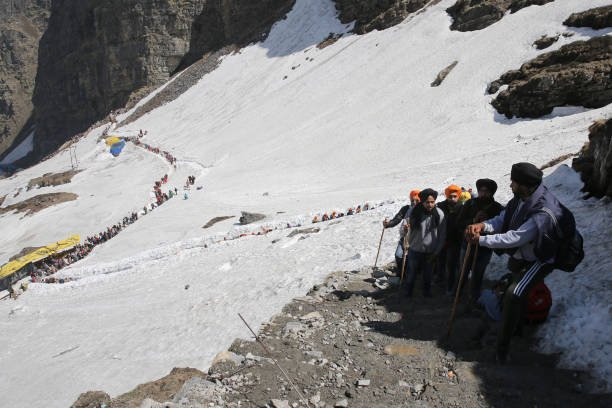
The trek is moderately difficult. From Pulna to Ghangaria, it’s about 10 km, and from Ghangaria to Hemkund Sahib, it’s 6 km uphill. The second part is tough due to altitude and steepness.
Prepare by walking, climbing stairs, and building stamina. Acclimatization is key. Carry proper trekking shoes, woolens, and light snacks. Avoid alcohol, stay hydrated, and don’t rush.
Govindghat to Ghangaria and Ghangaria to Hemkund Sahib Trek
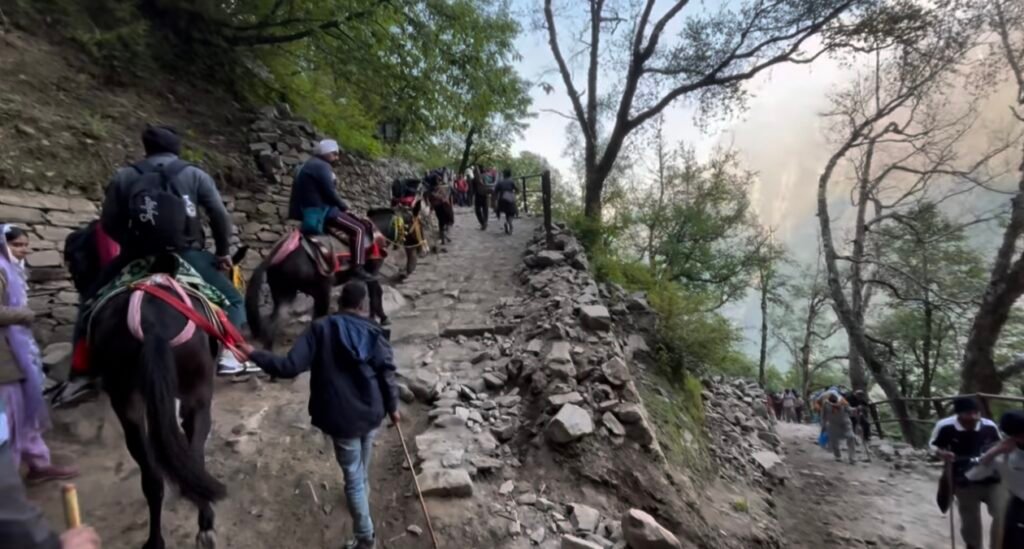
- Govindghat to Pulna (4 km by vehicle)
- Pulna to Ghangaria (10 km trek) — gentle ascent
- Ghangaria to Hemkund Sahib (6 km) — steep and challenging
Mules, porters, and helicopter options are available between Govindghat and Ghangaria. The trek to Hemkund from Ghangaria has stone paths, rest stops, and emergency services.
Best time to trek and visit Gurdwara Hemkund Sahib Trek
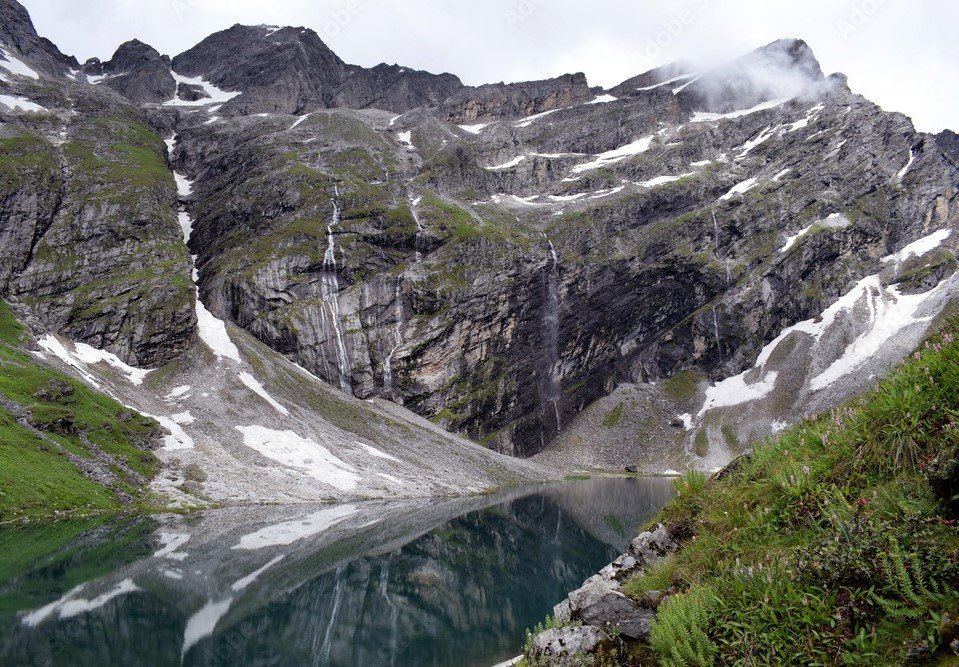
The best time to visit Hemkund Sahib is during its official pilgrimage season, which runs from late May to early October each year. The temple usually opens in late May (for 2025, the opening date is May 25) and closes from mid-October, depending on the weather. The most favorable months are late May to June and September to early October, when the weather is pleasant, trekking routes are smooth, and there is less chance of landslides or heavy rainfall. During July and August, the region receives monsoon rains, which can make the trek slippery and sometimes dangerous, although the landscape is lush and full of blooming flowers. Winter (November to April) is not an option,
Weather Information of Hemkund Sahib Trek
The weather at Hemkund Sahib is affected by its altitude and location in the Himalayas, resulting in cool to very cold temperatures and frequent rainfall during the open trekking season (late May to early October). In August, daytime maximums are expected to be around 12-20°C and minimums around 10-13°C, with high humidity and regular rainfall—making the trails wet, sometimes slippery, and the breeze strong and fresh. The monsoon months (July-September) see heavy rainfall, while early summer (June) and autumn (September) see clear skies and generally mild weather. Even at the peak of summer, nights can be cold and occasional rain or fog is common, so wearing woollen and waterproof gear is recommended. The site is closed from October to late May due to heavy snowfall and extreme cold, making trekking impossible outside of this time. Always check the local weather forecast before your trip and be prepared for quickly changing mountain weather.
Gurdwara Hemkund Sahib Trek Complete Itinerary
The Hemkund Sahib trek itinerary is usually completed in 3 to 4 days:
Day 1: Travel by road from Rishikesh/Haridwar to Joshimath or Govindghat.
Day 2: Trek about 10-13 km from Govindghat (or Pulna) to Ghangaria, the base camp before Hemkund Sahib.
Day 3: Early morning, climb the steep 6 km from Ghangaria to Hemkund Sahib, visit the Gurudwara and the lake, then return to Ghangaria.
Day 4: Trek 10-13 km to Govindghat and proceed by road to your next destination.
Alternatively, you can also include a day to visit the Valley of Flowers from Ghangaria. This trek involves varied terrain, amazing natural beauty and spiritual experiences, which can be best done between late May and October.
Things to do in Hemkund Sahib Trek World’s Highest Gurdwara
At Hemkund Sahib, the world’s highest gurdwara, the main activities include trekking from Govindghat to Ghangaria amid beautiful mountain landscapes and then climbing steeply to the gurdwara located on the banks of the glacial Hemkund Lake, which offers a serene spiritual experience. Pilgrims can pray at the gurdwara, attend the langar (community kitchen) for free food, dip in or touch the holy icy waters of Hemkund Lake, and admire the surrounding snow-capped peaks and rare Himalayan flowers such as the Brahma Kamal. Nearby attractions include the Lakshman Temple and the Valley of Flowers, a UNESCO World Heritage Site renowned for its vibrant flora. The trek is a mix of physical challenge, natural beauty, and deep spiritual devotion.
Where to stay at Gurdwara Hemkund Sahib Trek and food facilities at Hemkund Sahib (stay, langar, hotels)
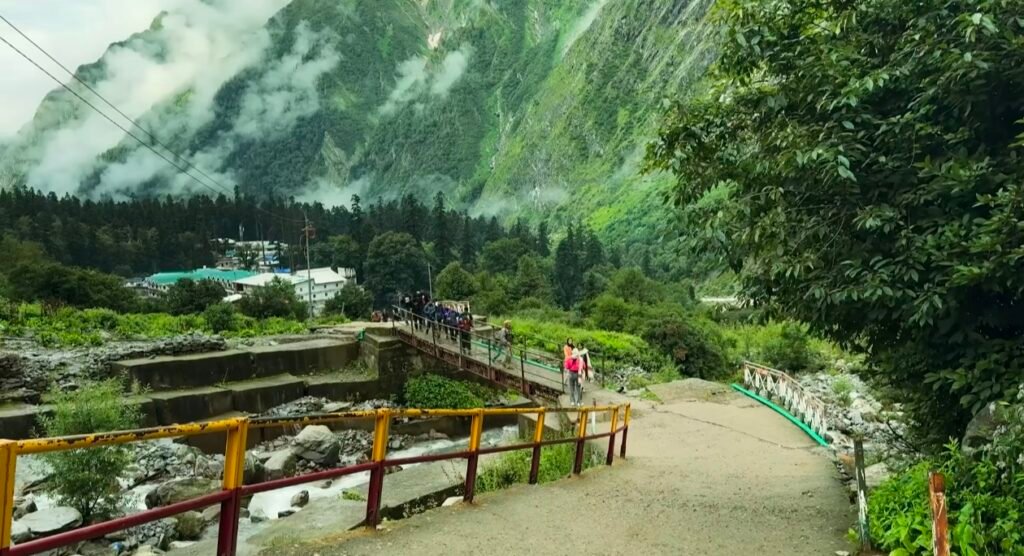
Since overnight stay is not permitted at the Gurudwara, accommodation is mainly available in nearby places like Govindghat and Ghangaria, which are the base points of the trek. Below is a detailed guide based on the latest information about places to stay and food facilities including langar during the Hemkund Sahib Yatra.
Where to stay
The trek starts from Govindghat, where Ghangaria is the main base camp, and there is no accommodation available at Hemkund Sahib due to its altitude and rules. Here are the main accommodation options:
- Govindghat (about 275 km from the starting point, Rishikesh)
Gurudwara Govindghat: Offers free accommodation for pilgrims in clean, simple rooms. It is a popular choice for those looking for an affordable and spiritually immersive stay. The gurudwara offers a serene ambiance and is well looked after, but rooms are subject to availability, so it is advisable to reach early or contact the gurudwara management in advance.
Tourist Rest House: Managed by the Garhwal Mandal Development Corporation (GMVN), it offers affordable accommodation with basic amenities for pilgrims and trekkers.
Hotels and Lodges: There are many budget and mid-range hotels available near Govindghat, offering affordable to deluxe options (1-star to 3-star). Examples include:
Hotel Bhagat and other local lodges, which offer basic rooms with essential amenities like beds and hot water (subject to availability). Prices start from ₹162 for budget options.
Advance booking is advisable, especially during the peak pilgrimage season (June to October), as rooms get filled quickly. Websites like Hotels.com, Expedia, or EaseMyTrip list options starting at $23 (₹1,607).
Parking: Paid parking is available at Govindghat for those coming by vehicle.
- Ghangaria (14 km trek from base camp, Govindghat)
Gurudwara Govind Dham: Located at Ghangaria, the last inhabited village on the route, this gurudwara offers free accommodation for pilgrims. The rooms are simple but clean, and come with shared facilities. It is a preferred choice for those who want to stay close to the Sikh community and join the langar. Availability may be limited during the busy season, so it is advisable to arrive early or enquire in advance.
Hotels and Guesthouses: Ghangaria has a number of simple hotels, lodges, and guesthouses for trekkers and pilgrims. These are simple, clean and equipped with essential amenities like beds and hot water (if available). Notable options include:
Mumukshu Resort (5 miles from Hemkund Sahib): A 3-star pet-friendly resort with a nature-themed ambiance that offers basic amenities.
GMVN Guesthouses: Run by the Garhwal Mandal Vikas Nigam, these offer affordable accommodation with basic amenities.
The average cost ranges from ₹200-400 per person for budget options to ₹1,000+ for more comfortable lodges.
Campgrounds: Mattressed tent accommodations are available at Ghangaria that offer a rustic feel and are ideal for trekkers.
- Hemkund Sahib
Overnight stay not allowed: Overnight stay is not allowed at Gurdwara Hemkund Sahib as it is 4,632 metres high and follows environmental regulations. Pilgrims will have to return to Ghangaria or Govindghat by evening, and it is advisable to depart from Hemkund by 2 pm to reach Govindghat by nightfall.
Booking Tips
Advance booking: During the pilgrimage season (May 25 to October), accommodation in Govindghat and Ghangaria can fill up quickly. Book hotels at least a month in advance for the best rates, preferably on platforms like Hotels.com, Expedia, or EaseMyTrip. Hotel prices are lower in February, May, and June.
Travel registration: Mandatory for all pilgrims, especially those using helicopter services or seeking accommodation at the gurudwara. Register online and carry a valid identity card for verification.
Helicopter services: For those who cannot travel, helicopter services are available between Govindghat and Ghangaria, which can be booked through IRCTC and UCADA. Book well in advance to secure a place.
Food Facilities
Food options along the Hemkund Sahib Trek are a mix of traditional Sikh langar and local eateries, ensuring pilgrims and trekkers are well-fed during the journey.
1. Langar at Gurdwara Hemkund Sahib
- The Gurdwara at Hemkund Sahib operates a langar (free community kitchen) serving simple, vegetarian meals to all visitors, regardless of background. Common offerings include:
- Khichdi: A wholesome rice and lentil dish, often served hot and described as delicious and filling after the cold, challenging trek.
- Chai: Hot tea to warm up in the freezing high-altitude weather.
- Other Items: Roti, dal, and sabzi may also be served, depending on availability.
- The langar embodies Sikh hospitality and is a cultural highlight, offering a spiritually enriching experience. It operates during the Gurdwara’s open hours (typically morning to early afternoon) and is free, though donations are appreciated.
2. Langar at Gurdwara Gobind Ghat and Gobind Dham
- Both Gurdwaras in Govindghat and Ghangaria provide langar services with free vegetarian meals, including khichdi, roti, dal, and tea. These are clean, tasty, and budget-friendly, making them a go-to option for pilgrims. The langar at Gobind Dham in Ghangaria also offers hot water for drinking.
3. Food Along the Trek Route
- Snack Shops: Small shops between Govindghat and Ghangaria sell snacks like Maggi, paranthas, and chocolate bars. Prices are inflated due to the remote location, so carrying personal snacks is recommended to save money.
- Langar Seva: Along the trail, volunteers and locals often organize langar seva, offering free food and water to trekkers. This includes tea, biscuits, or simple meals, reflecting the spirit of selfless service.
- Hotel Restaurants: Hotels like Hotel Mandakini (12 miles from Hemkund Sahib) and Hotel Taj Himalaya Khirsu (6 miles) in the region have on-site restaurants serving breakfast and dinner, with vegetarian options like rice, dal, and local dishes.
4. Other Considerations
- Vegetarian Focus: Most food options, including langar and local eateries, are strictly vegetarian, aligning with the spiritual ethos of the pilgrimage.
- Carry Snacks: Due to limited food availability and high prices on the trek, bring energy bars, dry fruits, or snacks for convenience.
- Water: Carry a reusable water bottle; safe drinking water is available at langar points or Gurdwaras, and some shops sell bottled water (at a premium).
Important Things to Know Before Starting the Gurdwara Hemkund Sahib Trek
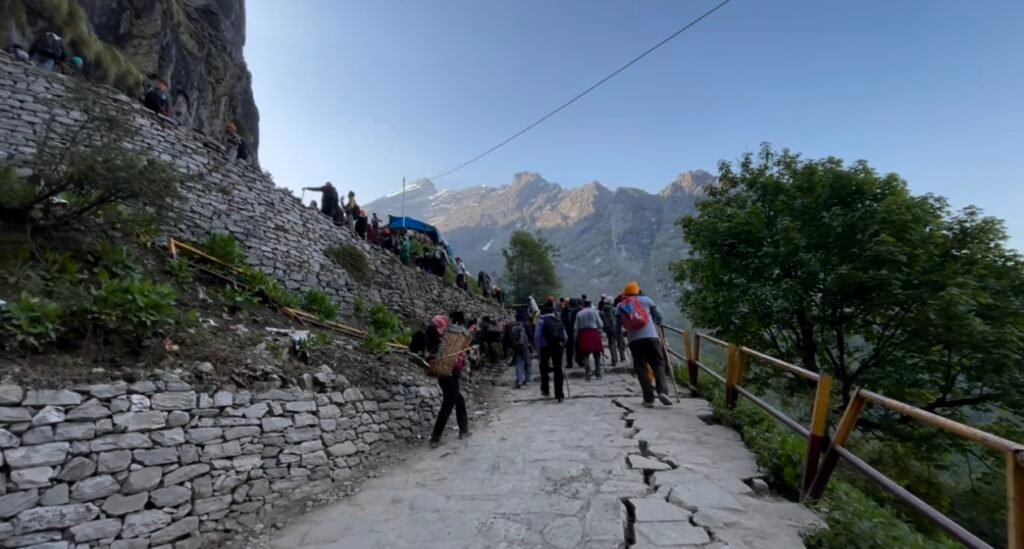
Before starting the trek, know that the altitude and steep climbs require good physical fitness. Acclimatization is a must, especially if you are not used to mountainous terrain. Start the trek early in the morning to avoid bad weather, and always carry your identity card, warm clothes, raincoat, energy snacks and water. Mobile networks are limited, so inform someone about your plan before the trek.
Essential Preparation and Expert Tips for the Gurdwara Hemkund Sahib Trek
Prepare for the trek by building stamina through walking, jogging, or cycling at least a few weeks in advance. Carry a reusable water bottle, avoid plastic, and keep some dry fruits for quick energy. Wear broken-in trekking shoes to avoid blisters. Trekking poles can help ease the strain during the steep ascent. Avoid alcohol or smoking during the journey, and listen to your body — altitude sickness is real.
How Much Does It Cost to Do the Gurdwara Hemkund Sahib Trek?
Budget (₹3,300–5,900): This includes basic accommodation in gurdwaras/dharamshalas, langar (which is free), public transport (such as buses or shared jeeps), and trekking. Actual traveler reports confirm that if you keep costs low and mainly use gurdwara facilities and public transport, you can trek for around ₹3,000–₹6,000.
Midrange (₹7,500–14,500): This includes better hotel stays, more food options, and porters or ponies. Guided group tours and shared taxis also fall in this cost range. As mentioned, ponies, porters, and a little more convenience push the budget.
By helicopter (₹9,000-16,500): The fare for a helicopter ride from Govindghat to Ghangaria is often ₹6,000-10,000 one way, which matches your detailed budget. When you add accommodation and meals, the total easily goes up to ₹9,000-16,500.
Cost break down: Your estimates for transport, hotels, meals, ponies/porters and other items match published blogs and travel sites, all of which mention that langar is free, hotels are available for ₹200-1,000/night, and ponies/porters charge ₹1,500-4,000 one way.
Cost saving tips: Staying and eating at gurdwaras, using public transport and bringing snacks/water are all practical and recommended.
Permits and other information: Trek permits for Hemkund are free, only a small fee (₹150-200) has to be paid for entering the Valley of Flowers.
Conclusion:
The Gurudwara Hemkund Sahib trek is really affordable and spiritually rewarding, as you mentioned, it costs around ₹3,300 to ₹16,500 per person—depending on your travel style, preferences and support services. Your factsheet is reliable and matches independent travel accounts and package tour descriptions.
Documents and Permits Required for Hemkund Sahib Trek
As of now, there’s no special permit required for Indian nationals to visit Hemkund Sahib. However, it’s advisable to carry:
- A government-issued ID proof (Aadhaar, PAN, passport)
- Foreign nationals may be required to register and carry a valid visa and passport
In monsoon or pandemic conditions, local authorities might introduce entry forms or health checks, so it’s best to confirm before your trip.
Mobile Network and Internet Facility in Hemkund Sahib
Mobile network and internet connectivity on the Hemkund Sahib trek has improved in recent years, but coverage is still limited and varies by location. Jio (Reliance Jio) 4G now offers the best connectivity at Hemkund Sahib Gurudwara, Ghangaria (Gobind Dham), and parts of the trekking route. At Hemkund Sahib itself, Jio has a tower, which provides a strong enough signal for calls and even video calls in 2024. BSNL 2G is also available in Ghangaria, but it is slow—good mainly for calls and SMS, not for internet. Airtel and Vodafone (Vi) networks usually do not work beyond Joshimath or Govindghat; their signals are missing in Ghangaria and Hemkund Sahib. Wi-Fi is not usually available, and there are no dedicated internet cafes on the trek or in Hemkund Sahib. In case of emergencies, basic phone connectivity is available in some areas, but it is advisable to inform your family before starting the trek, as you might be out of contact for a long time.
Safety Tips and Medical Facilities for Hemkund Sahib Trek
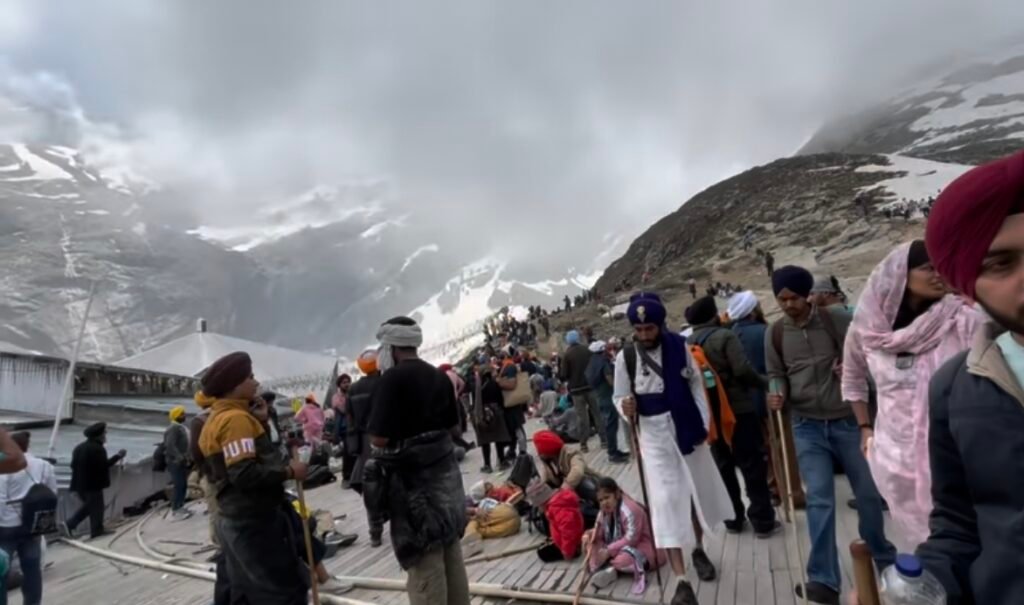
Safety is of utmost importance. The trail is generally safe, but steep slopes and weather changes can be treacherous. Travel in a group if possible and avoid trekking after sunset. Medical assistance is available at small clinics in Ghangaria and the first aid centre at the Gurudwara. Always carry basic medicines for fever, pain, motion sickness and altitude sickness.
Myths and Stories Related to Hemkund Sahib (Legends & Myths)
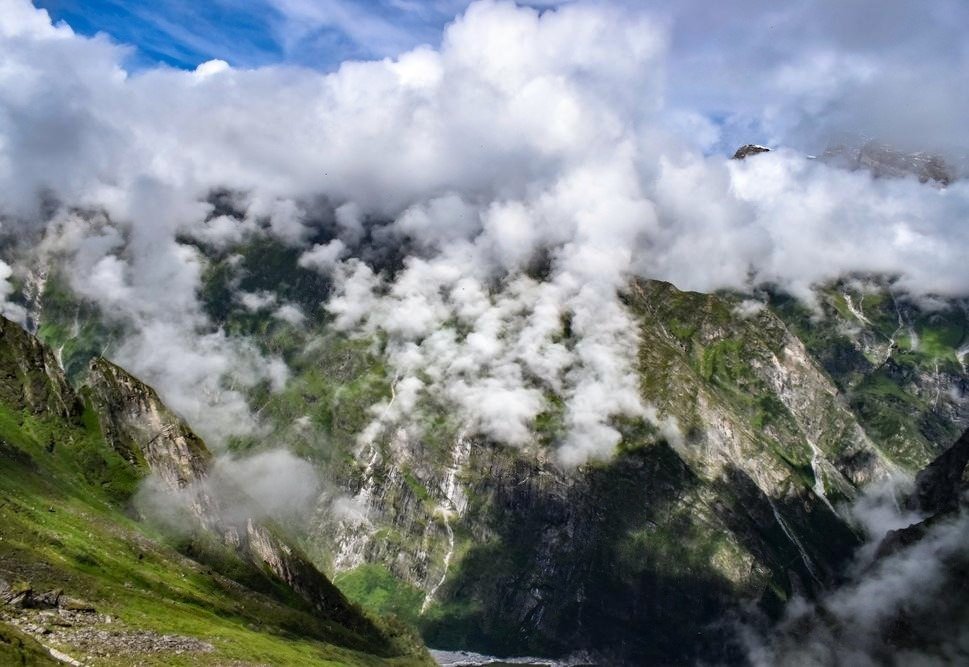
Hemkund Sahib is surrounded by rich mythology and stories from both Sikh and Hindu traditions. According to Sikh belief, Guru Gobind Singh Ji meditated here to fight evil, before being born as the sage Daman Rishi. According to Hindu legends, this lake, once called Lokpal, is the same place where Lord Rama’s brother Lakshman meditated after being injured in battle and was cured by the miraculous Sanjivani herb brought by Hanuman. The flowers that bloom in the valley are said to have rained down from heaven in celebration. Other stories link the site to the Pandavas and various divine beings. These legends make Hemkund Sahib a spiritually significant and unique place for many pilgrims.
Nearby Places to Visit from Hemkund Sahib Trek
Nearby Places to Visit from Hemkund Sahib Trek (with distances and highlights):
- Valley of Flowers National Park (6 km): UNESCO World Heritage Site, famous for vibrant wildflowers, best viewed in July–August.
- Ghangaria Village (6 km): Base camp for both Hemkund and Valley of Flowers; offers accommodation, meals, and a peaceful mountain vibe.
- Laxman (Lokpal) Temple (near Hemkund Lake): Hindu temple linked to Lakshman’s legends, a short walk from the gurdwara.
- Govindghat (19 km): Main starting point of the trek; has gurdwara, hotels, shops, and transport links.
- Badrinath (42 km by road): Major Hindu pilgrimage site with the renowned Badrinath Temple and natural hot springs.
- Mana Village (44 km): The last Indian village before Tibet, full of mythological sites and scenic beauty.
- Joshimath (about 36 km): Gateway to Badrinath, has temples, monasteries, and a cable car to Auli ski resort.
These places combine spiritual importance, natural beauty, and cultural richness, making your Hemkund Sahib journey even more memorable.
Frequently Asked Questions (FAQs)
1. What is the height of Hemkund Sahib?
It is located at 15,200 feet (4,633 meters) above sea level.
2. Hemkund Sahib is associated with which Guru Ji?
Guru Gobind Singh Ji, the tenth Sikh Guru.
3. What is the importance of bathing in Hemkund Sahib?
Devotees believe a dip in the icy lake purifies the soul and removes negativity.
4. Is there an entry fee for Hemkund Sahib?
No, entry is completely free.
5. When does Hemkund Sahib Yatra start and end?
It starts in June and ends by early October each year.
6. How long and difficult is Hemkund Trek?
The full trek is about 19 km (one way), and the difficulty is moderate to high.
7. Can women and solo travelers go to Hemkund?
Yes, many women and solo pilgrims successfully complete the trek each year.
8. Is langar available in Hemkund Sahib?
Yes, langar (free meals) is provided both in Ghangaria and at Hemkund.
9. What health precautions should be taken?
Stay hydrated, carry basic medicines, and avoid rushing to prevent altitude sickness.
10. Is mobile network available in Hemkund Sahib?
No, mobile connectivity is not available at Hemkund Sahib.
11. Are ponies or mules available during the trek?
Yes, they are available from Govindghat to Ghangaria and Ghangaria to Hemkund.
12. Is photography or drone flying allowed?
Photography is allowed in the trekking route, but not inside the Gurudwara. Drones are generally not permitted.
13. Is registration necessary for the trek?
No registration is needed as of now, but check updates before traveling.
14. Can foreign tourists do the trek?
Yes, with valid identification and visa.
15. Is first aid and medical help available?
Yes, basic medical help is available at Ghangaria and at the Gurudwara.
16. What should be packed?
Warm layers, waterproof gear, good trekking shoes, ID, torch, medicines, and energy snacks.
17. Is Hemkund Sahib safe for children and elderly?
Only if they are medically fit. Consult a doctor before planning.
18. Till where is the helicopter service available?
Helicopters operate between Govindghat and Ghangaria (not Hemkund directly).
19. How is plastic and waste managed?
Plastic use is discouraged. Use designated bins and carry your waste out.
20. Best season to visit?
September is ideal — less crowded, pleasant weather, and blooming surroundings.
21. Can we take bath in the lake?
Yes, but it’s extremely cold. Take caution while entering.
22. How cold is the water in Hemkund Sahib Lake?
It remains near freezing (0–4°C), even in peak summer.
23. When can we see snow?
Snow is visible in June and again in late September/October.
24. Can we stay or camp at Hemkund Sahib?
No overnight stay or camping is allowed at the Gurudwara due to its altitude and conditions.
25. Which city is closest to Hemkund Sahib?
Joshimath is the closest city, about 22 km from the trek’s starting point (Govindghat).

